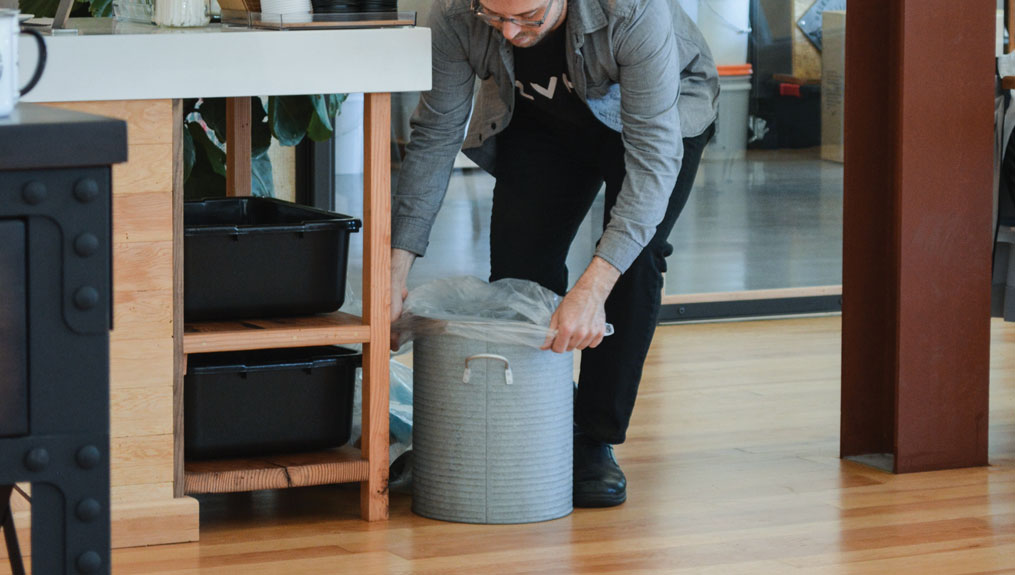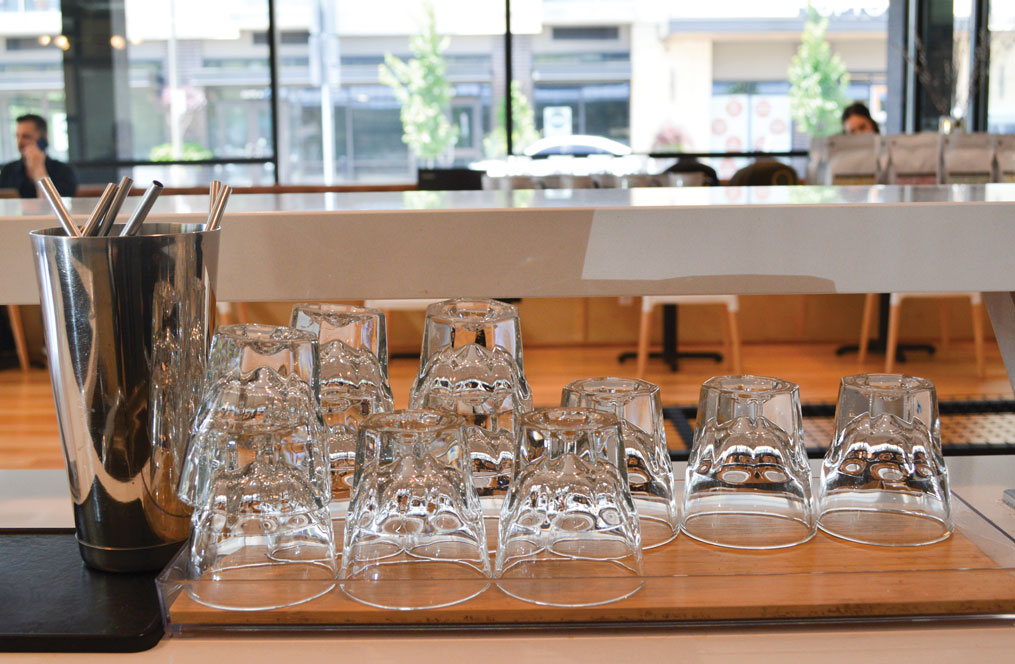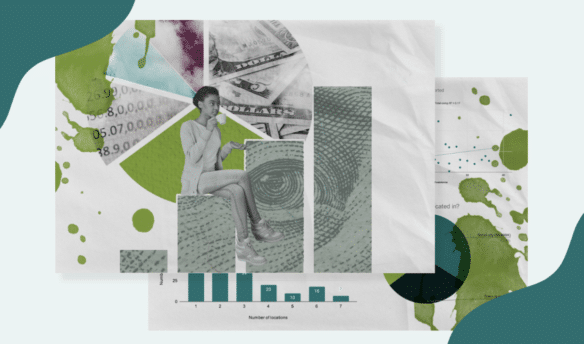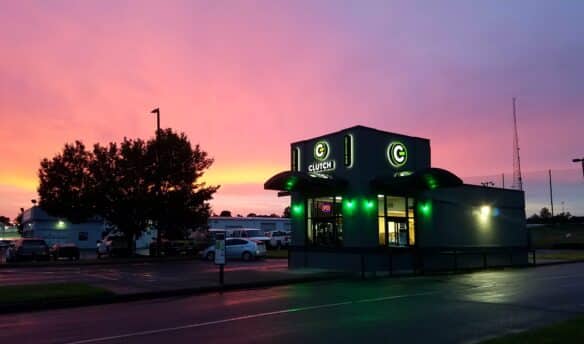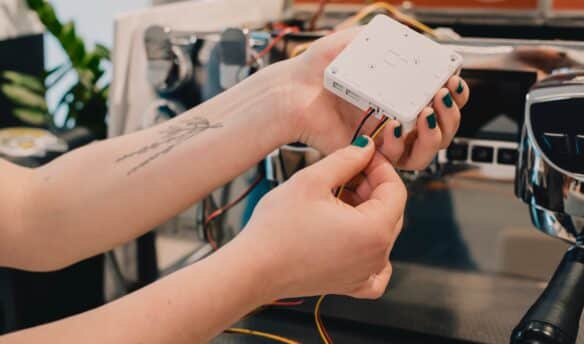[S]ixteen-year-old Nobel Peace Prize nominee Greta Thunberg wrapped up her speech at the 2019 World Economic Forum meeting in Davos, Switzerland, by telling world leaders to “behave like our house is on fire, because it is.”
And she’s right.
Coffee shops hand out an estimated 250 billion paper cups every year, which go straight to landfills. Even the cups that say they’re recyclable on the packaging are misleading, because the infrastructure to recycle them is very expensive and doesn’t exist in many municipalities.
Cups are just the tip of the iceberg when it comes to waste produced by cafés. From plastic straws to clam-shell to-go containers, cafés have become a highly visible representation of pollution, abundant waste, and corporate environmental responsibility for consumers.
Switching to recyclable materials has proven to be less than effective at reducing one’s environmental footprint. According to a study published in peer-reviewed journal Science Advances, only nine percent of the plastic ever produced has been recycled—that’s 6.3 billion metric tons of plastic hanging out in waterways, landfills, and oceans for the next 20–1,000 years.
That’s why the zero-waste café movement is gaining traction.
A zero-waste café program is a visionary mindset to help guide operators in changing their practices to emulate sustainable natural cycles, where all discarded materials are designed to become resources for others to use through reduction, reuse, recycling, and rot (composting). To implement a zero-waste program requires an investment of time, resources, and dedication over months and even years. But it’s attainable, even business-savvy, given the right framework and planning.
By implementing a zero-waste system, owners and managers can keep hundreds or even thousands of pounds of resources from ending up in the trash.
Not only can managers divert their cash flow from literally ending up in the trash, but customers will appreciate the effort. According to a 2017 Nielsen survey, 85 percent of millennials ages 21–34 consider it “extremely” or “very” important that companies implement programs to improve the environment. Those people are the very same customers who are driving the specialty coffee market. The National Coffee Association’s 2018 report showed that 48% of 25–39 year olds reported drinking a gourmet coffee drink within the past 24 hours.
Here, we outline the steps and tools your organization can utilize to develop a zero-waste program tailored to your business needs:
Step 1. Conduct an audit of your current waste management.
- Observe! Grab a pair of gloves and use the trash audit (available for download here) to assess exactly what is going into your trash cans, recycling bins, and compost for one week. This exercise is meant to provide you with an understanding of your waste management flow and know for certain if products are ending up in the correct place, or if your customers need additional education.
- Note your key findings from the audit.
- Ex: Are compostables ending up in the trash? Are your recycling bins full of cups? Do the suppliers you source from create unnecessary waste?
- Keep additional notes on waste that’s been improperly disposed of, such as food-contaminated containers ending up in recycling.
- Stay safe! Only audit the waste produced within the café space and behind the bar; don’t include the trash the bathroom. Make sure that you’re working in a space that doesn’t violate health codes within your municipality, and have proper gear: close-toed shoes, thick gloves, and sturdy clothes.
Step 2. Designate a waste reduction champion or committee.
- Make sure your champion or committee has the authority to be effective.
- Set up regular meetings to check on the progress of your zero-waste program.
Step 3. Tackle the low-hanging fruit first.
Once you have your data from the audit, find the opportunities in your business where you can make the greatest impact with minimal effort. Decide on one or two waste-reducing initiatives to start with; these can be as creative or as simple as your committee decides.
Keep in mind what the needs and desires of your customers are; start out with initiatives that are fairly simple for your customers to understand and get used to. If you operate in an area that’s unfamiliar with waste-reducing practices, begin by offering an in-house cup option or switch from plastic straws to a plant-based option.
Some options won’t be feasible in certain areas due to lack of composting or recycling facilities, while others might not work for your customer base. Additionally, some options will require research into what’s available in your area. Always keep accessibility in mind when designing a waste-reducing initiative—you want to make sure that any customer who comes through your door can enjoy your space. The choice on what to implement and how to do so is up to you and your team.
Here’s a list of ideas to get you started:
-
- Reduce disposable plastic to-go options
- Create a cup lending library
- Implement a to-go cup deposit program
- Change from plastic to compostable options
- Offer a reusable in-house cup option
- Reduce disposable plastic to-go options
-
- Reduce or replace plastic straws
- Sell reusable options
- Offer an in-house option
- Offer paper or plant-based straws
- Keep straws and stirrers behind the counter
- Reduce or replace plastic straws
-
- Make use of reusable packaging options
- Where reverse logistics are feasible, consider switching to reusable alternatives for pallets or containers
- Make use of reusable packaging options
-
- Change your waste management practices
- Use compostable trash bags
- Implement recycling or composting programs
- Partner with a local company or gardening group to take your used coffee grounds
- Change your waste management practices
Step 4. Create manageable goals.
- Any successful waste-reducing initiative needs to have a SMART plan in place before implementation. The acronym stands for specific, measurable, attainable, relevant, and timely.
- Start a spreadsheet that monitors key waste management statistics.
- Check in with your employees who work the bar and talk to customers to see if your initiative is working as anticipated or if it needs adjustment.
- As programs start to become established as norms, start finding new ways to reduce waste in your café and go for the more and more difficult tasks.
- Upgrade to energy-saving equipment, add insulation to reduce heating and cooling, subscribe to composting services, etc.
- You’ll likely need to conduct additional trash audits to assess the current state of your waste management program and find areas to improve.
Even if going zero-waste sounds unobtainable for your business, implementing a few waste-reducing practices could be great for your bottom line—and helping the planet. For those companies who are able to achieve minimal waste, let your community know about your accomplishments: share your results in-store and on social media, send out a press release, or host a media event. Use your system as a marketing tool to differentiate your business and attract more customers.
Café owners, managers, and baristas have the power to keep thousands of pounds of waste from being produced through thoughtful management and creative problem solving.
For more information on waste-reducing strategies, subscribe to Fresh Cup and read our regular column, “The Last Plastic Straw.”

